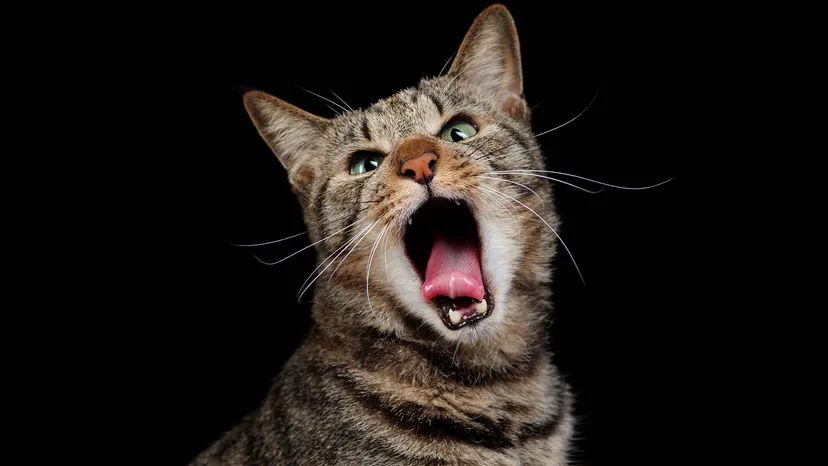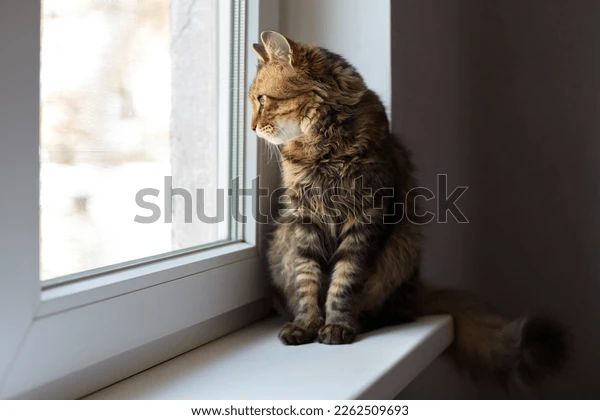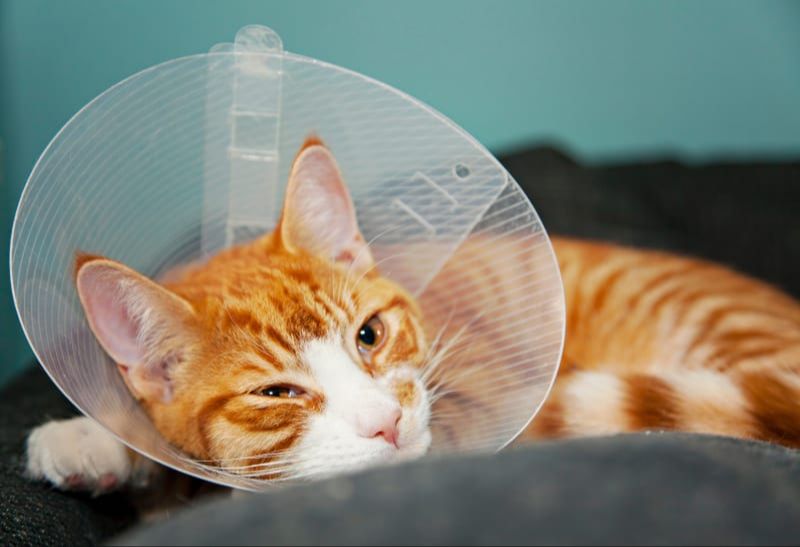What is a Cat’s Heat Cycle?
A cat’s heat cycle, also known as the estrous cycle, is the period when a female cat can become pregnant. It refers to the recurring biological changes enabling cats to reproduce.
Cats are seasonally polyestrous, which means they can go into heat multiple times throughout breeding seasons. Cats do not go through menopause and their heat cycles typically continue until they are spayed.
The heat cycle emerges when a cat reaches puberty, usually between 6-10 months old. However, some cats can have their first heat cycle as early as 4 months. When a cat goes into heat, hormonal changes in the brain trigger ovulation and the cat’s reproductive system prepares for mating and potential pregnancy.
The heat cycle enables the release of eggs for fertilization. If the female cat mates and does not become pregnant during a heat cycle, she will go out of heat then go into heat again after a break. This repetitive cycle allows multiple opportunities for mating and pregnancy over the breeding season.[https://www.companionsspayandneuter.com/cat-heat-cycle]
When Do Cats Go Into Heat?
Female domestic cats generally reach sexual maturity and go into heat for the first time between 4 and 12 months of age, with an average around 6 months (source). However, the specific age varies based on factors like the cat’s breed, health, and time of year.
Most cats have their first heat cycle around 5-6 months old, though longhaired breeds like Persians and Himalayans tend to mature slightly later, starting heat cycles closer to 8-10 months old. Shorter-haired cats may start cycling as early as 4 months old (source).
The season also impacts when cats first go into heat. Cats are “seasonally polyestrus,” which means they go into heat multiple times during breeding seasons. They tend to cycle into heat most frequently in spring and summer months when days are longer. Their heat cycles often decrease in fall and winter when daylight hours are shorter.
Signs Your Cat is in Heat
There are several clear signs that indicate when a female cat is in heat. These signs often become increasingly intense as the cat gets closer to ovulation. Some of the most common signs that a cat is in heat include:
Calling/Yowling
Female cats in heat become very vocal and make loud, frequent yowling or howling noises. This is their way of calling for a male mate.[1] The yowling can persist for several hours at a time, often worsening at night.

Rubbing/Rolling
Cats in heat rub and roll against objects like furniture or their owner in an effort to attract potential mates. They are marking objects with their scent. This rubbing may seem cute at first, but can quickly become excessive.
Tail Positioning
When in heat, female cats hold their tails up straight in the air while treading their hind legs. This makes their reproductive organs more accessible to males. Their tails may also twitch rapidly.
Decreased Appetite
Female cats are often too preoccupied with mating to eat much when they first enter heat. Their drive to mate overpowers their normal hunger cues. This reduced appetite may persist for several days.
Increased Affection
In an attempt to attract a mate, cats in heat often become extra affectionate and clingy with their owners or other pets. They rub against bodies more insistently.
Spraying
Some female cats may spray strong-smelling urine when in heat, leaving smelly markings around the house. This is another form of communicating sexual availability to males.[2]
Knowing these common signs can help owners identify when their cat is in heat and take steps to keep her comfortable.
[1] https://vetic.in/blog/cats/is-your-cat-in-heat-9-obvious-signs-of-heat-in-cats/
[2] https://revealpetfood.com/pet-advice/how-to-tell-your-cat-is-in-heat/
Stages of a Cat’s Heat Cycle
A cat’s heat cycle consists of four main stages:
Proestrus – This first stage lasts 1-2 days and is marked by early signs of heat such as vocalization and restlessness. The female cat will become more affectionate, rub against objects, and roll around. Her vulva will begin to swell.
Estrus – The second stage lasts 4-10 days. The female cat is now receptive to mating with males and will adopt the mating stance. She will continue vocalizing, rubbing, and rolling. This is the period where she can become pregnant if not spayed. Her vulva will be swollen and she will produce a pink or red vaginal discharge.

Interestrus – Also called diestrus, this third stage marks the end of receptiveness to mating. It lasts 30-50 days if the cat is not pregnant. The female cat will no longer be interested in mating and her vulva will return to normal size.
Anestrus – The last stage is a period of sexual inactivity that lasts 2-3 weeks. The cat has no signs of heat and its reproductive system rests between cycles.
The source for this section is: https://www.companionsspayandneuter.com/cat-heat-cycle
How Long Does a Cat Stay in Heat?
The average length of a cat’s heat cycle is about 7 days, though it can vary from as short as 1 day to as long as 21 days. According to VCA Animal Hospitals, each heat generally lasts several days with the average being around 7 days (Source).
Some factors that can affect the duration of a cat’s heat cycle include:
- Age – Younger cats tend to have shorter cycles while older cats have longer cycles.
- Time of year – Heat cycles tend to be longer in the spring and summer.
- Indoor vs outdoor – Indoor cats tend to have longer, more frequent cycles.
- Presence of male cats – Being around male cats can prolong the heat cycle.
The heat period ends when the female ovulates, which usually occurs within 24-48 hours after mating according to PetMD (Source). Signs of heat like vocalizing and restless behavior will stop once the cat is out of heat.
Managing a Cat in Heat
A cat in heat can be a challenging experience for any pet owner. Here are some tips for managing a cat while she is in her heat cycle:
Keep the cat indoors and supervised. Do not let her outside unsupervised, as this can lead to unwanted mating. Keep windows and doors closed or use screens to prevent her from escaping the house.

Reduce mating behaviors by limiting contact with male cats. Do not allow intact males into the home, as this can trigger mating behaviors. If you have a male cat at home, keep him separated.
Provide stimulation and affection to ease frustration. Give your cat extra playtime, brushing and petting to help redirect her energy. Consider getting cat appeasing pheromones like Feliway to help calm her.
Ask your vet about medication. Short term drugs like Megestrol may suppress heat symptoms. But discuss with your vet, as risks exist.
Consider spaying your cat. Spaying is the only sure way to permanently end a cat’s heat cycles. Discuss with your vet the ideal age to spay based on health considerations.
With patience and care, you can get through this time in a cat’s life while minimizing frustrations for you and your pet. Don’t hesitate to consult your vet if you need additional advice on managing a cat in heat.
Heat Cycle Frequency
The typical cat will come into heat multiple times per year, usually between spring and autumn. According to vcahospitals.com, the average cat will go into heat 4-5 times a year.
There are several factors that can affect the frequency of a cat’s heat cycle:
- Breed – Some breeds like Siamese go into heat more frequently than others.
- Age – Young cats often have more frequent and irregular cycles. Cycles tend to stabilize around 1-2 years of age.
- Season – Most cats have more frequent heat cycles during long daylight hours of spring and summer.
- Presence of male cats – Being around intact male cats can induce heat cycles.
- Indoor vs. outdoor – Outdoor cats tend to have more heat cycles per year.
While each cat is different, monitoring the number of heat cycles per year can help identify any potential health issues. Discuss any concerns with your veterinarian.
When to Spay Your Cat
Spaying your female cat offers important health and behavior benefits. Spaying prevents female cats from going into heat, getting pregnant, and having kittens. It eliminates behaviors associated with the heat cycle like loud meowing, increased affection, spraying, and attempts to escape outdoors. Spaying also prevents mammary tumors, uterine infections like pyometra, and uterine cancer later in life.
Most veterinarians recommend spaying female cats between 4-6 months old. According to Today’s Veterinary Practice (https://todaysveterinarypractice.com/preventive-medicine/optimal-age-spay-neuter-cat/), the optimal age to spay is before 5 months. Spaying at this young age provides health and behavior benefits while being safe for the cat. The cat is old enough for anesthesia but young enough to avoid serious complications from going into heat. Many shelters spay cats even earlier at 2-3 months to prevent pregnancy in the shelter environment.
While some argue for delaying spaying until 6-9 months to allow cats to fully physically mature, studies show the benefits of early spaying outweigh any potential downsides. The American Animal Hospital Association states cats spayed before their first heat have just a 0.5% chance of developing mammary tumors later in life compared to 26% for cats spayed after 1 year old. Spaying early also better prevents undesirable behaviors associated with heat cycles.
Health Concerns

One of the most important reasons to spay a female cat is to avoid serious health issues that can develop if she is not spayed. Intact female cats that are not spayed are at risk for life-threatening illnesses including pyometra, uterine and mammary cancer, and cystic endometrial hyperplasia.
Pyometra is a potentially fatal infection of the uterus that typically occurs in middle-aged to older intact female cats. It causes the uterus to fill with pus and bacteria, requiring emergency surgery to remove the infected uterus and ovaries. According to the ASPCA, nearly 25% of intact female cats will develop pyometra by age 10.
Intact female cats also have a much higher risk of developing malignant mammary tumors. Spaying a cat before her first heat cycle nearly eliminates the risk of mammary tumors. The risk increases with each subsequent heat cycle. After 2-3 years of heat cycles, an intact female cat has a risk of mammary tumors that is 91% higher compared to a spayed female cat.
To avoid these severe health consequences, veterinarians recommend spaying female cats before their first heat cycle, which usually occurs between 5-9 months of age. Spaying helps cats live longer, healthier lives. It is a routine procedure with minimal risks that prevents serious diseases. Owners should schedule an appointment with their veterinarian to get their female cats spayed.
FAQs
Here are answers to some frequently asked questions about cat heat cycles:
How often do cats go into heat?
Most cats will go into heat multiple times per year. On average, cats will have a heat cycle every 2-3 weeks. However, each cat is different and may go into heat as frequently as every few days or as infrequently as every 6-8 months (https://www.bgshelterpets.com/more-about-heat-cycles.html).
Do male cats go into heat?
Yes, male cats do go into heat cycles, which are referred to as “mating seasons.” A male cat’s mating season is triggered by longer daylight hours in the spring and summer months. During this time, male cats are driven by the urge to find a mate and will become more vocal, urine mark, and roam in search of females in heat (https://www.purina.co.uk/articles/cats/health/pregnancy/cat-heat-cycle).
How can I stop my cat’s heat cycle?
The only way to permanently stop a cat’s heat cycles is to get them spayed (if female) or neutered (if male). This surgical sterilization procedure removes the hormones that drive their mating behaviors. In the meantime, you can try confining your cat indoors and providing distraction with toys during their heat period.
Is it normal for cats to go into heat after being spayed?
No, it is not normal for a cat to go into heat after being properly spayed. Spaying removes the uterus and ovaries, eliminating heat cycles. If a spayed cat goes into heat, contact your vet as there may be ovarian tissue remaining that needs surgical removal.

